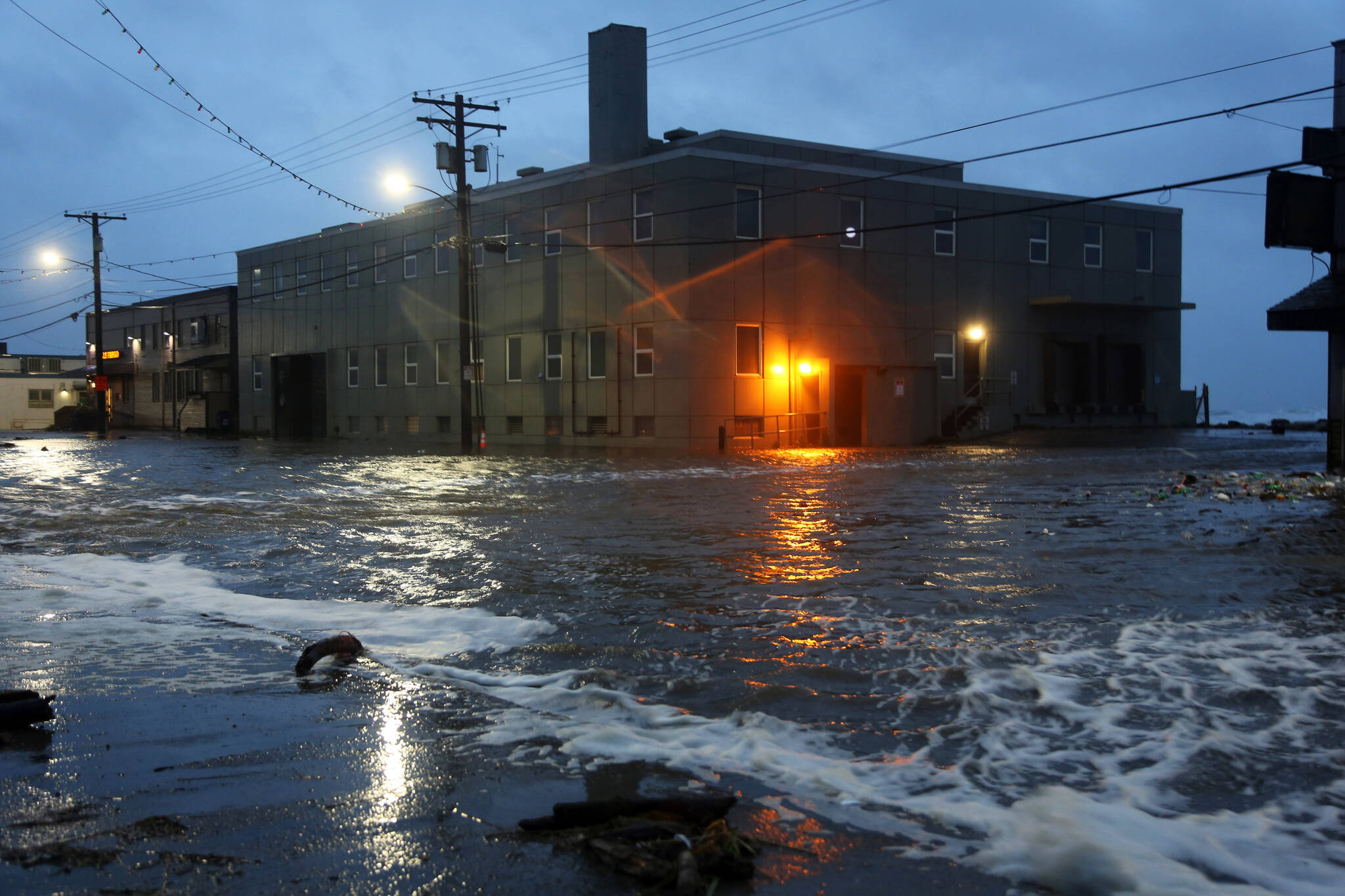ANCHORAGE — There’s been significant damage to some roads and homes in parts of western Alaska following last weekend’s devastating coastal storm, Gov. Mike Dunleavy said Wednesday after touring some communities along the state’s the vast coastline.
“For the most part, people are recovering and digging out,” he told a news conference.
There were no injuries or deaths reported after the storm, the remnant of Typhoon Merbok, traveled north through the Bering Strait. It brought tidal surges and high winds that ripped up the main streets in several communities and pushed homes off foundations in what was described as the worst storm in a half century.
About 21,000 people living along a 1,000 mile stretch of Alaska’s western coast — a distance longer than the California coastline — were affected by the storm.
Among the communities hardest hit was Nome, famous for being the finish line of the Iditarod Trail Sled Dog Race each March.
Ryan Anderson, head of the state transportation department, said many repairs are needed, including fixing torn up pavement on the town’s main street and removing storm debris.
A highway that connects Nome to the tiny community of Council, about 70 miles away, was also heavily damaged. Up to 10 miles of that road were totally obliterated, he said, with heavy damage occurring on another 10 more miles or so.
Two bridges on the road are in good shape, but the approaches so the bridges were damaged.
The state has already connected with contractors in Nome to begin repair work on the street and road, and engineers are in place. “That work is happening immediately,” he said.
They are working with contractors to repair damage in other communities. A plane for surveyors is waiting for better weather in Nome to fly.
“We’re going to map this entire area along Norton Sound to make sure we’re documenting these damages and we’re moving forward to repair them,” he said.
In the community of Elim, its main street was completely destroyed, and about 3 miles of road were washed out in the community of Golovin.
The most damage in Golovin occurred on a spit, where homes were slammed by waves and knocked off their foundations. Large shipping containers were strewn up to 2 miles across the bay, Dunleavy said.
There are few roads in western Alaska and none that connect to the state’s contiguous road system, leaving communities to rely on air travel. Anderson said the airports survived the storm well.
“All airports on the west coast are operational and as of today, all of our lighting systems are working,” he said.
Dunleavy said it was too early to determine the cost of all repairs, but he anticipated getting some estimates for road and airports within a few days.
The state’s emergency management director, Bryan Fisher, said the state is awaiting word if its request for a federal disaster declaration to bring in additional resources, personnel and financial support will be approved.
Dunleavy on Saturday approved a state disaster declaration. Fisher said they are focused on getting supplies like plywood, insulation and tin to repair roofs “to make sure we can button up homes and make sure residents out there have a safe, warm place to be before winter shows up.”
About 130 members of the Alaska National Guard and other military organizations have been activated to help remove debris and clean up after the storm, and to talk to residents.
“We want to go out with compassion and want talk to the people and make sure that we’re taking care of their needs,” said Maj. Gen. Torrence Saxe, the state’s adjutant general and commissioner for the military and veterans affairs department.
Dunleavy said he plans to visit these communities again early next month to see how much progress has been made.

